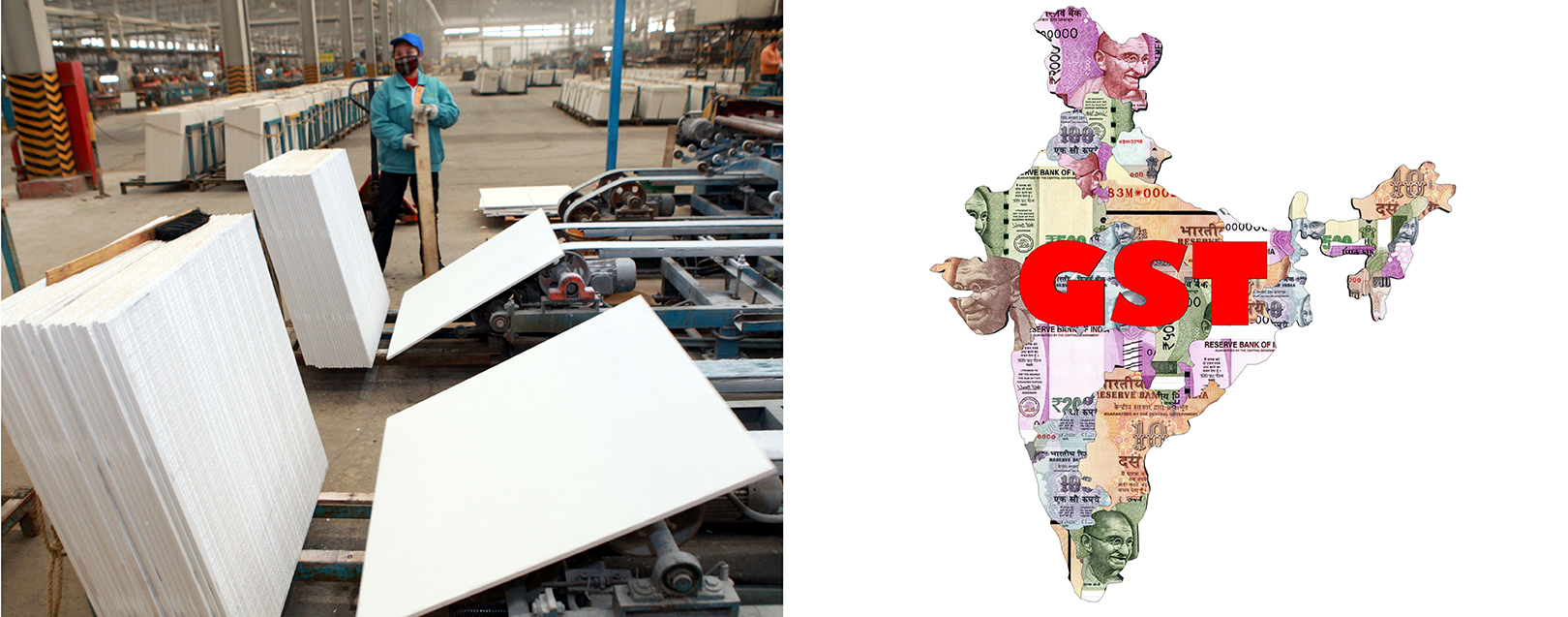
IIP growth falters in the run-up to GST; Core sector performance remains flat
By Abin Daya
It’s more than a month after the implementation of GST and the wrinkles are slowly being ironed out. A tax reform on such a massive scale will definitely have teething troubles. As the experiences grow, and as pain points emerge, these will need to be met with and resolved on priority.
One such issue that exporters have had is on exporting under Letter of Undertaking, LUT/Bond. While exporters were permitted to submit LUT or Bond to avoid payment of IGST and thereby reduce their working capital burden, there was no uniformity in understanding and implementation of the said requirement by the Field Officers. This led to significant confusion and difficulties for exporters.
The Policy wing of GST has now issued clarifications vide Circular no. 5/5/2017 on Aug 11 to address these issues.
As per the same, any exporter who has received a remittance of Rs.1Cr or 10% of export turnover in the previous FY, whichever is higher, is eligible to avail the LUT facilities. Status holder exporters are eligible for LUT facilities, irrespective of whether they satisfy this condition or not.
Another clarification that has been provided is regarding the time for acceptance of LUT/Bond. Directions have been issued to the field officers to accept the LUT/Bond within 3 working days of submission along with all supporting documentation by the exporter.
Guidelines have also been provided regarding the Bank Guarantee to be submitted by the exporters along with the Bond. Commissioners have the authority to waive off the requirement of the Bank Guarantee for exporters who have registered with recognised Export Promotion Councils.
There are also additional clarifications regarding Form CT-1, transactions with EOUs etc. One of the most important clarifications/directions is with respect to the effective date of the instructions in the circular. It has been clarified in no uncertain terms that the guidelines as per the circular are applicable for all exports from 01 July 2017, and not from the date of issue of the circular.
Coming to our update for the week, we talk about the core sector performance, performance of industrial production and the steel sector, in that order.
Core sector and industrial production have taken a hit during the month of June, due to the de-stocking done to prepare for the GST. The decline has been fairly wide-spread, and has also had to contend with base effects. Will need to wait and see how long it takes for things to come back to normal.
On the question of industrial production (IIP), we can also see revisions being made to the data. If you compare the previous publication for May IIP and the current publication for June IIP, the indices for the previous FY have got recalculated in the current one, and have gone down from what they were earlier. While it reduces the IIP growth rate for FY17, what it also does is to bring down the base for the current year’s performance. Have spent some time on this in the current week.
Core sector
- Contraction in 4 of the 8 infrastructure sectors, and marginal growth in 2 of the others pulled down core sector growth to 0.4% y-o-y in June 2017, as against 4.1% in May and 7% in the same month last year

- While unfavourable base effect was one reason for the dismal performance, contraction in coal, fertiliser, refinery products and cement production contributed to the fall in growth
- The biggest fall was seen in coal production, which grew 12.1% in June last year, but contracted by 6.7% this year
- Refinery products, which has the highest weightage (28.0376), fell from 5.8% to -0.2%
- The only two sectors which improved their performance from last year were Crude Oil, and Natural Gas
- Growth in electricity sector, which had hit 9.8% in June 2016, dropped to 0.7% this year
- Steel sector, which came out of a prolonged down-turn in early 2016, and which had been enjoying a fairly robust growth rate since then, has also seen growth rates moderating recently
- Cumulative growth for the Apr-June period more than halved from last year – from 6.9% to 2.4% in 2017
Industrial Production
- Extending from the fall in growth of core sector industries, which constitute 40% of the weightage of overall IIP, industrial growth slowed down to -0.1%, the lowest in 4 years

- As can be seen from the above chart, all the individual sectors dropped growth rates between last year and this year
- While base effect could be cited as one of the reasons, the fall in production and demand in the run-up to GST hurt industrial growth badly
- Manufacturing, which accounts for almost three-quarters of the overall weightage, contracted by -0.4%, against 7.5% in June 2016 and 2.6% a month earlier
- Out of the 23 sub-groups in manufacturing, 15 recorded negative growth in June, driven by reduction in inventories prior to the transition to GST
- Electrical equipment extended the decline from -15% in May to -20.1% in June, while fabricated metal grew at -11.1% during June
- Even considering the use-based indices, the story was not different, with capital goods extending the decline further from May 2017 levels

- Part of the reason for the performance of capital goods can be attributed to base effect, which at 15% in June 2016, was the fastest growing segment during the month
- This has slipped to -6.8% a year later in June 2017, thereby placing a significant drag on the overall index
- Four out of the six use-based-classifications contracted during June – apart from Capital goods, other segments such as Primary Goods, Intermediate Goods and Consumer Durables contracted
- For Infrastructure & Construction Goods and Consumer non-durables, the growth rates were significantly below where they were a year back
- Growth in Consumer non-durables also dropped significantly below last month’s growth rate – from 9.5% to 4.9%
Changes in data
- One of the factors impacting performance numbers is the base effect, and while excellent performance during one month would feel good at the time, it also puts the pressure to better the performance the next time around
- But what if the base itself gets altered, for whatever reason, and help tweak up the numbers just a little bit? That seems to have happened with IIP numbers in June 2017
- The sub-indices and consequently the overall index for all the months from Apr 2016 to Mar 2017 have undergone revision between last month’s publication of May data, and this month’s publication of June data
- This is only the fourth month with the new base series for IIP, and it is likely that the data will undergo revisions as fresh inputs come in
- However, it is providential that this time around, the revised data as per current publishing have helped move up the growth rates for the Mar 2017 to June 2017 period

- The index for Apr 2016 has been revised downwards from 114.4 as per last month’s release, to 113.7 as per current month’s release; resultant, IIP growth for Apr 2017 has been revised upward from 2.8% to 3.4%
- Similarly, growth for May 2017 has increased from 1.7% to 2.8% due to the downward revision of the index for May 2016
- As per the unrevised data for June 2016, the IIP should have contracted by -0.9% in Jun 2017; however, due to the revision in data, this contraction has been limited to -0.1%
- While the revision in data has affected all sub-categories and classifications, it is starkly evident for Consumer Durables, where the index has got recalculated by as much as -5.3% in Feb 2017

- While the original data would have seen this segment contracting by -6.6% in June, the revised data has contained the contraction to -2.1%
- Similarly, a contraction of -4.5% for May has now become a growth of 0.8% post the revision
- With GST implementation having gone through, and with restocking to take care of pent-up demand happening, it is likely that we will see a better growth figure for IIP in July
- However, it is likely to remain below the (revised) figure of 4.4% for July 2016, as businesses will take a little while more to come back to normal
Performance of Indian steel sector moderates
- Supported by the restrictions imposed on cheap imports, the domestic steel industry has been growing quite well since early 2016
- So much so, when the global industry and the largest producer, China, grew by 1.3% and 1.6% respectively in 2016, the Indian industry grew by 7.4% y-o-y

- However, this growth has moderated in recent times and during the period Jan-Jun 2017, Indian steel industry has grown by 5.3%
- Global industry and the Chinese industry have improved their growth rates to 4.2% and 4.3% at the same time
- Monthly growth rates of the industry have been on a declining trend for the Indian industry for some time now

- Since hitting the peak in Jan 2017 at 15.3%, industry growth has been declining and has hit a low of -1.1% in Jun 2017
- The only large producer which is faring worse than us is Japan, where the industry has been stagnating for quite some time
- However, that should be of small comfort to us as India’s share in the global industry, which had improved from 5.51% in Jan 2015 to 6.38% by Feb 2017 has now fallen back to 5.64% in June
- While it is easy to explain the numbers with ‘base effect’, I believe a deeper analysis is required to understand the reasons for the moderating growth,
- It assumes even more importance as at the same time, the Chinese industry, which is almost 10 times the size of the Indian industry, is able to improve the growth rates

Abin Daya the author of 'Basics of Trade: An India Perspective' is a FEMA expert, a career transaction banker, with close to 15 years of experience in corporate and transaction banking, in India.







 to success.
to success.